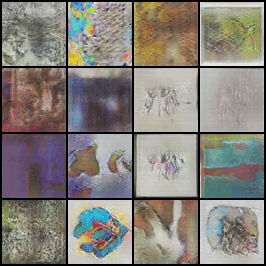Generative Adversarial Networks, or GANs for short, are an approach to
generative modeling using deep learning methods, such as convolutional neural networks.
Generative modeling is an unsupervised learning task in machine learning that involves automatically discovering and learning the regularities or patterns in input data in such a way that the model can be used to generate or output new examples
that plausibly could have been drawn from the original dataset.

- Generator model that is used to generate new plausible examples from the problem domain.
- Discriminator model that is used to classify examples as real (from the domain) or fake (generated)..
The generator model takes a fixed-length random vector as input and generates a sample in the domain. The vector is drawn from randomly from a Gaussian distribution, and the vector is used to seed the generative process. After training, points in this multidimensional vector space will correspond to points in the problem domain, forming a compressed representation of the data distribution. This vector space is referred to as a latent space, or a vector space comprised of latent variables. Latent variables, or hidden variables, are those variables that are important for a domain but are not directly observable.
 The Dicsriminator Model
The Dicsriminator Model
The discriminator model takes an example from the domain as input (real or generated) and predicts a binary class label of real or fake (generated). The real example comes from the training dataset. The generated examples are output by the generator model. The discriminator is a normal (and well understood) classification model. After the training process, the discriminator model is discarded as we are interested in the generator. Sometimes, the generator can be repurposed as it has learned to effectively extract features from examples in the problem domain. Some or all of the feature extraction layers can be used in transfer learning applications using the same or similar input data
Learn more about human face generating gan.
